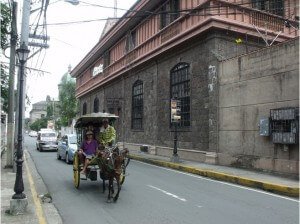Column: Managing Society
Manila Times
Dr. Emiliano T. Hudtohan
Published May 21, 2013
To get around Metro Manila, I have a variety of transport to choose from: the LRT and MRT, bus, utility vehicle [FX], jeepney, tricycle and calesa. I have practically tried them all. To go to De La Salle Araneta, I take the LRT from Vito Cruz to Balintawak station and ride the taxi up to Victoneta Avenue, Malabon; to go to San Beda College, Mendiola I take the LRT and transfer to MRT1 at Doroteo Jose and get down at Legarda station. To go to Philippine Women’s University, I take a utility vehicle at Vito Cruz St. To go to De La Salle University, on a rainy day, I ask the tricycle driver to drop me at DLSU South Gate. To go to De La Salle RCBC campus on a carless day, I have a choice to take a taxi, bus, and jeepney. And when I tour my foreign guests around Luneta Park and Intramuros, I hail a calesa.
While Metro Manila transport is well networked, there are a number of setbacks putting civil society at a disadvantage to say the least. Many times convenience exacts a price. In Manila, it is easier to get a cab outside the mall where barkers stay. But in most cases the passenger has to shell out at least P5.00 to the barker while the driver has to give a corresponding amount. A similar arrangement rules getting public transport from other points in Manila.
Asians who don’t speak English well enough are often preyed upon by both barkers and drivers. Americans, British and Europeans are usually spared from extortion. Are the drivers and barkers cowed?
Once in Harrison Plaza I witnessed a calesa driver getting the bitter end of the bargain with a foreigner accompanied by a Filipina and her children. Apparently, the driver wanted more than what he originally charged for the distance covering Luneta to Harrison Plaza.
Relatedly, in Manila anything associated with traffic is a lucrative business for those who claim “preferential options” for the poor. They believe they can use any empty space for parking for a fee. They seem to be protected by the local government. Ambulant vendors cause traffic jams when unscrupulous drivers stop to buy from street vendors.
In Singapore, the mass transit station has air-conditioned waiting area. In New York, the central station is seven stories high and one can easily be lost. In London, the underground Tube is efficient but the trains overground sometimes break down. And Sydney trains are slow, running on choo-choo engine.
The transport system, like any other system, is not perfect. To make it work, coordination and cooperation are needed. James Surowiecki in The Wisdom of Crowds says, “Cooperation problems often look like coordination problems, because in both cases a good solution requires people to take into account what everyone else is doing.”





Leave a Reply
You must be logged in to post a comment.